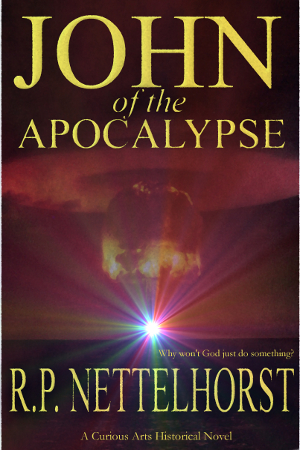In The Hitchhiker’s Guide to the Galaxy Douglas Adams wrote “Space is big. You just won’t believe how vastly, hugely, mind-bogglingly big it is. I mean, you may think it’s a long way down the road to the chemist’s, but that’s just peanuts to space.” One of the hardest things for humans to comprehend is the vast amount of nothing that is most of reality as we know it. Overwhelmingly most of reality, in fact.
On January 19, 2006, the New Horizons probe was launched toward Pluto. It left Earth with the fastest launch speed ever recorded for a human-made object, at about 36,000 miles per hour or about 10 miles per second. At that speed, it could fly from Los Angeles to New York City in a little more than four minutes. About eight hours after launch, it had sped past the orbit of the moon, traversing a distance that had taken the Apollo astronauts three days to cross. It passed the orbit of Mars on April 7, 2006, barely three months after liftoff. On February 28, 2007 New Horizons went past Jupiter. It passed the orbit of Saturn on June 8, 2008. It passed the orbit of Uranus on March 18, 2011.
And how close is New Horizons to reaching Pluto? It is currently about 23 AU from Earth and still has about 8 and a half AU to go (one AU–astronomical unit–is about 93 million miles, the distance from the sun to the Earth). It won’t reach Pluto until July 14, 2015.
Our solar system is mostly empty space. Even those regions that are considered crowded—for instance the asteroid belt—are really very empty. Despite the images we have from numberless science fiction shows of spaceships facing the asteroid belt and dodging enormous rocks in space and surviving only due to the incredible skill of the astronaut pilot, the reality is radically different. On any trip through the asteroid belt, it’s improbable that you’d even catch a glimpse of a single asteroid. A significant number of spaceships, including New Horizons, have now passed through the asteroid belt in the years since space travel began, all without any difficulty at all. There were no tricky maneuvers necessary, and no demonstration of exceptional piloting skill. Traveling through the asteroid belt is like a trip across the back roads of Nevada, only more so: a trip through emptiness, just like the rest of the solar system.
And the emptiness of our solar system is nothing compared to the emptiness between the stars.
The Milky Way Galaxy has about 400 billion stars in it. Our nearest spiral neighbor, the Andromeda Galaxy is a fuzzy spot in the sky that you can see in the evening if you look toward the northeast. It’s about 2.5 million light years away, and contains about 1 trillion stars. The Milky Way and the Andromeda Galaxy are racing toward each other at around 87 miles per second. They will suffer an inevitable collision in about 4.5 billion years. That’s right. Traveling at a speed that would take you from Los Angeles to New York in 28 seconds, it will take these two galaxies billions of years to meet up in a train wreck to beat all train wrecks.
Except—galaxies, for all their grandeur and size, and as packed as they might appear in pictures, are still mostly empty space. When they smash together in the future, a collision that itself will take about a billion years—not one star is likely to ever touch any other star. In any collision between galaxies, it’s profoundly improbable that any two stars will smash into each other. Consider: the closest star to Earth is over four light years away, close to the average distance between stars in either galaxy. And in the end, the two galaxies will become one.
There will be effects from the collision, of course: stars will move, a few may be tossed out of the galaxy altogether by the gravitational interactions among them. In fact, there’s about a fifty percent chance that our own solar system will be flung into intergalactic space. But chances are, no actual collisions between any of the stars—or their planets—will occur.
Space is empty—an emptiness beyond our ability to comprehend. Even so, that our galaxy will collide with the Andromeda Galaxy—or any galaxy— is actually more likely than a collision between stars. How come? Because of the vast size of the galaxies. The distance between neighboring stars is approximately equal to ten million times the diameter of a star. By contrast, the distance between galaxies is approximately only twenty times the diameter of a galaxy. So as enormous as the distance between galaxies is in absolute terms, the relative distance is actually quite close. Therefore, galaxies collide far more often than stars.
 Send to Kindle
Send to Kindle
 A Year With God
A Year With God A Year With Jesus
A Year With Jesus The Bible's Most Fascinating People
The Bible's Most Fascinating People The Bible: A Reader's Guide
The Bible: A Reader's Guide Antediluvian
Antediluvian Inheritance
Inheritance John of the Apocalypse
John of the Apocalypse Somewhere Obscurely
Somewhere Obscurely The Wrong Side of Morning
The Wrong Side of Morning